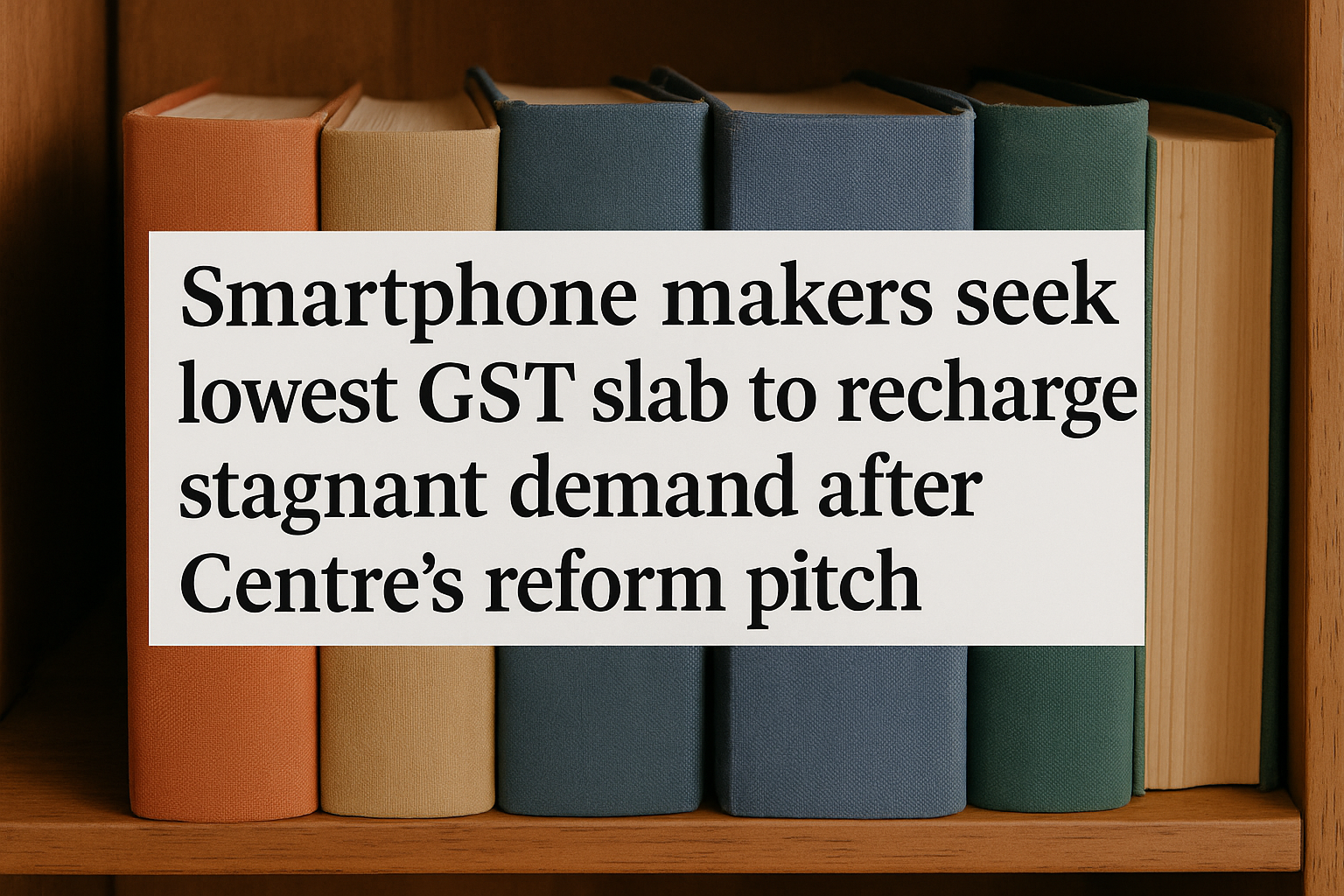
Smartphone manufacturers are pushing for a cut in the goods and services tax (GST) on mobile phones to 5% from the current 18%, arguing that the move would help revive demand and make devices more affordable, especially in the entry-level segment.
They pointed out that demand for smartphones has remained flat at around 150 million units annually for the past four years, and that a lower GST would provide significant relief to millions of consumers.
According to handset makers, the high tax rate has tied up working capital, increased manufacturing costs and eroded India’s global competitiveness.
Chairman of the India Cellular & Electronics Association (ICEA), told Moneycontrol that a reduction in GST will benefit both the industry and consumers. ICEA—which counts global brands such as Apple, Xiaomi, Oppo, Vivo, and Motorola, along with Indian firms like Lava among its members—has already written to the finance ministry seeking relief, he added.
“The mobile phone is no longer aspirational; it is essential digital infrastructure for education, healthcare, governance, and financial inclusion. It should rightly be taxed at 5% GST, aligned with the Prime Minister’s reform agenda and the vision of a $500 billion electronics ecosystem,” he said.
ICEA has urged the government to treat mobile phones and their components as essential goods and place them in the 5% bracket.
The industry group also wants accessories and parts aligned under the same slab to remove anomalies and deepen local value addition.
He added that handsets, which are the primary digital access tool for more than 90 crore Indians, must be classified as necessities under the upcoming GST reforms. “This is not a concession, it is a correction,” he said.
Industry representatives stressed that a GST cut would serve a dual purpose: easing affordability for consumers while sustaining India’s smartphone manufacturing base. Since nearly all mobile phones sold in the country are now locally made, higher domestic demand would directly support production, expand exports, and anchor value-chain growth.
The call for reform is not new. Earlier this year, ICEA and other associations had asked the finance ministry to consider a mid-way cut to 12% as part of the GST rationalisation exercise. But Prime Minister Narendra Modi’s Independence Day address, in which he spoke about easing the tax burden on ordinary citizens, has renewed the industry’s push for the lowest 5% slab.
The managing director of Lava said the tax burden is directly slowing digital adoption. “The government wants digitalisation, but that can’t happen without affordable devices. More accessible handsets will help connect more citizens,” he said, noting that the ₹10,000 price band in particular would benefit most from a tax cut.
Manufacturers also flagged inconsistencies in the GST regime for components and accessories. The Council’s fitment committee had originally recommended placing phones in the 5% slab, but the final decision in 2020 raised the rate to 18%. According to ICEA, this has dragged down consumption—from nearly 300 million units annually before the hike to just about 220 million units now—hurting replacement cycles and affordability.
Despite these headwinds, India’s mobile phone manufacturing has surged, growing from Rs 18,900 crore in FY15 to Rs 5,45,000 crore in FY25, with exports crossing Rs 2,00,000 crore, making India the world’s second-largest handset maker.
Analysts say the elevated tax continues to weigh on the market. IDC projects smartphone shipments to dip marginally in 2025, citing weak demand in the budget segment.
Counterpoint Research estimates India’s smartphone market at $53 billion in retail value terms and says a GST reduction, even to 12%, would provide a much-needed demand stimulus. An expert noted that while a cut could cost the exchequer $3–6 billion in revenue, higher sales volumes could offset part of the loss.
“The market has peaked at 169 million units in 2021 and has stagnated at around 154 million units since. A GST cut would make devices more affordable, boost consumption, and enhance global competitiveness,” he told Moneycontrol.
Not everyone agrees, however. chief analyst at TechArc, pointed out that while smartphone volumes have stagnated, revenue growth has remained strong, driven by rising average selling prices and consumer preference for premium devices. “Phones above ₹30,000 now account for more than 30% of the market, compared with just 5–6% earlier. Given this premiumisation trend, I don’t see a strong case for placing smartphones in the 5% GST slab. The current 18% rate can continue,” he said.